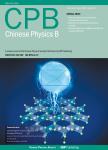Investigation and optimization of sampling characteristics of light field camera for flame temperature measurement
Investigation and optimization of sampling characteristics of light field camera for flame temperature measurement作者机构:Key Laboratory of Energy Thermal Conversion and Control of Ministry of EducationSchool of Energy and EnvironmentSoutheast UniversityNanjing 210096China School of Engineering and Digital ArtsUniversity of KentCanterburyKentCT27NTUK Sunny Central Research InstituteHangzhou 310052China
出 版 物:《Chinese Physics B》 (中国物理B(英文版))
年 卷 期:2019年第28卷第3期
页 面:202-217页
核心收录:
学科分类:08[工学] 0805[工学-材料科学与工程(可授工学、理学学位)] 0704[理学-天文学] 0803[工学-光学工程]
基 金:supported by the National Natural Science Foundation of China(Grant Nos.51676044 and 51327803) the Social Development Project of Jiangsu Province,China(Grant No.BE20187053) the Postgraduate Research and Practice Innovation Program of Jiangsu Province,China(Grant No.KYCX170081) China Scholarship Council
主 题:light field camera flame radiation sampling parameter optimization temperature reconstruction
摘 要:It is essential to investigate the light field camera parameters for the accurate flame temperature measurement because the sampling characteristics of the flame radiation can be varied with them. In this study, novel indices of the light field camera were proposed to investigate the directional and spatial sampling characteristics of the flame radiation. Effects of light field camera parameters such as focal length and magnification of the main lens, focal length and magnification of the microlens were investigated. It was observed that the sampling characteristics of the flame are varied with the different parameters of the light field camera. The optimized parameters of the light field camera were then proposed for the flame radiation sampling. The larger sampling angle(23 times larger) is achieved by the optimized parameters compared to the commercial light field camera parameters. A non-negative least square(NNLS) algorithm was used to reconstruct the flame temperature. The reconstruction accuracy was also evaluated by the optimized parameters. The results suggested that the optimized parameters can provide higher reconstruction accuracy for axisymmetric and non-symmetric flame conditions in comparison to the commercial light field camera.



